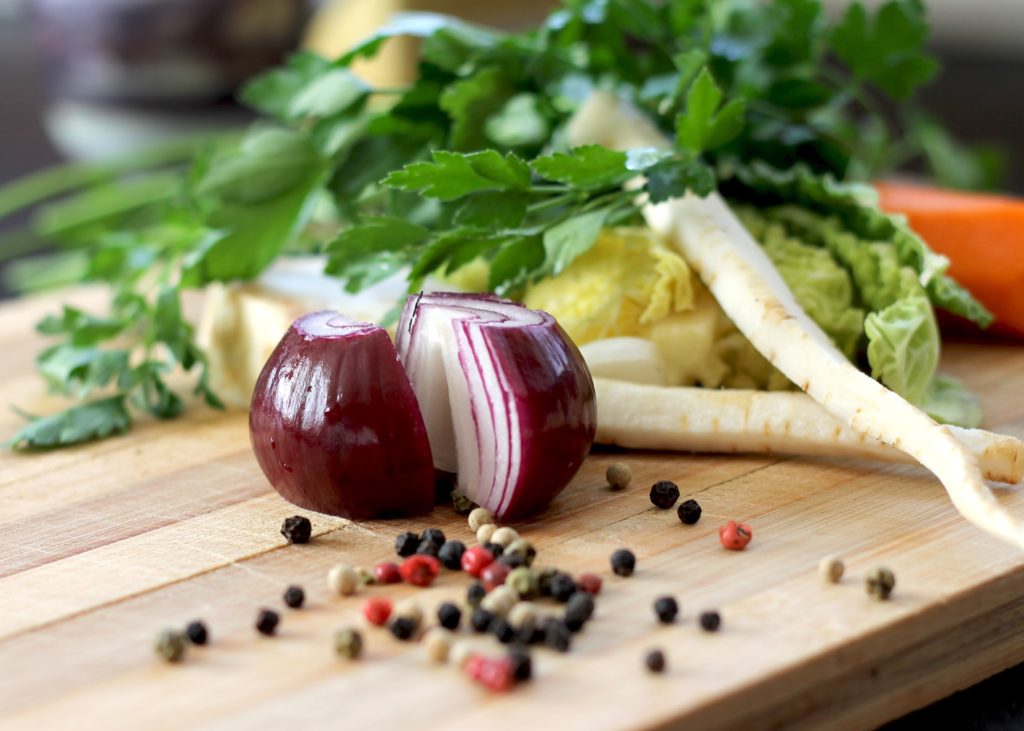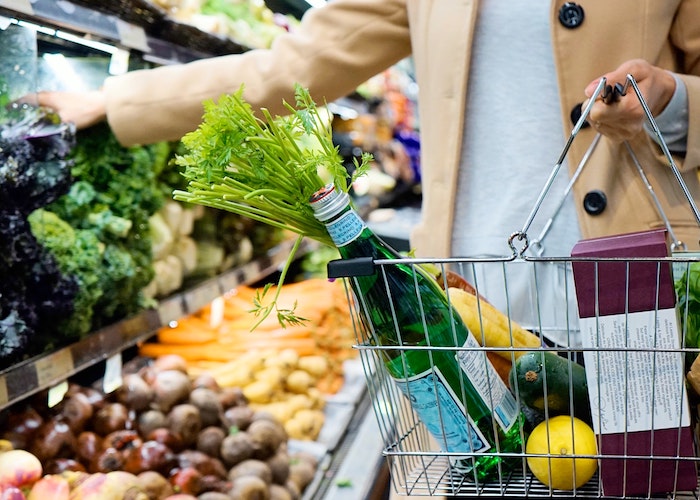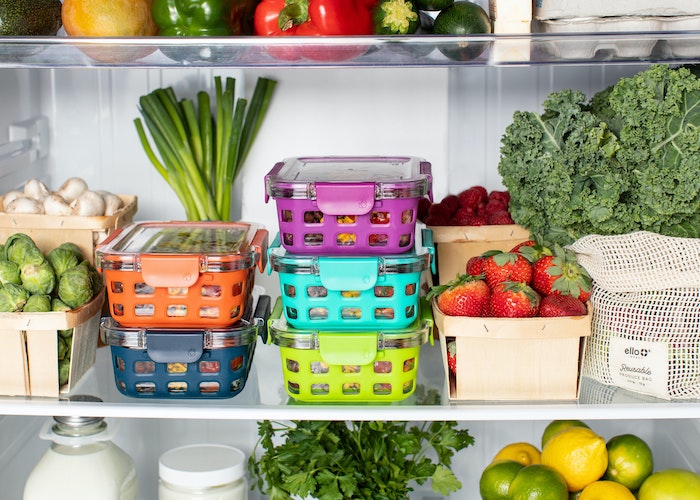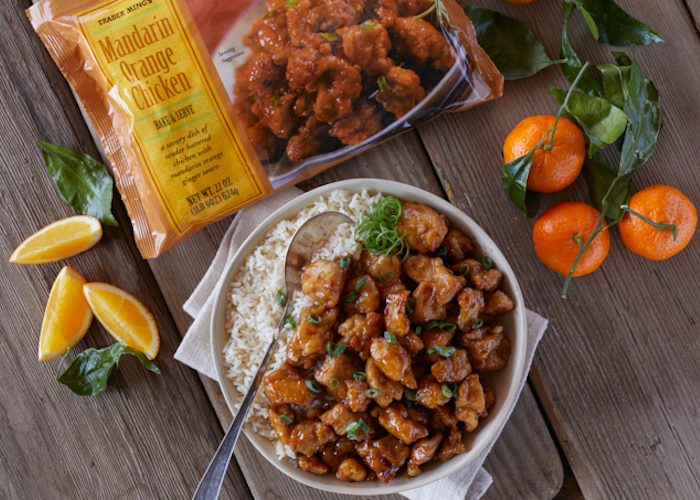5 Ingenious Tips To Make Your Fresh Produce Last Longer

I see you, one-pound bag of carrots in the back corner of the fridge. I’m concerned for the state of you. And yet instead of opening you up to determine if you need life support, or to at least be transferred into proper vegetable storage, I grab a La Croix and slowly close the door with a grimace on my face.
The dread of rotting produce has returned again this week. Every time my husband opened the fridge to grab the milk, I caught the eye of the arugula. Its container was too moist — I could see the condensation from across the room. But slowly I averted my gaze back to the local news, hoping the wilting arugula wouldn’t judge me too harshly. (It would).
To be honest, most weeks have been like this in my apartment — until recently. The dread grew and grew until I realized that my refrigerator was controlling me, rather than the other way around. I needed to do something to regain my place as Woman of the House. I needed to show that produce who was boss. And as it turned out, the solution was to get my hands dirty before the produce minions even made it into the fridge.
Do you struggle with disobedient produce? Here are my 5 tips for fruit and vegetable storage and preparation:
1. Teach Your Lettuce Some Respect
For baby spinach, mixed greens, or that pesky arugula, open the package right away. Fluff it up a little to show it you mean business. Then place a paper towel inside. This not only soaks up excess moisture, but it also reassures the lettuce that you’re no tyrant and, in fact, care for its comfort level. With wrapped items like iceberg lettuce or cauliflower, unwrap them and place them gently in a large Ziploc bag with a paper towel blanket. You have now subdued the lettuce.
2. Give (Some) Fruits the Scrub Down
Nothing is more humiliating to an apple than getting bathed by a stranger. Use this shame to your advantage. Get in all the nooks and crannies of those apples, oranges, and grapefruits and set them in a bowl — in the fridge or out of it — so they are ready to grab and go. They may not enjoy baring it all out in the open, but this humiliation will quell any uprisings.
Take note that soft berries become vengeful if you get them wet. They will do everything in their power to produce mold out of spite, so keep those little babies dry.
3. Rough Them Up a Bit
Certain produce — like radishes, beets, or still-intact carrots — require a bit more effort. You will have to chop off the greens. Don’t overthink it — just grab a knife and go. It’s the one way to eliminate the dread of having to do it later, and also helps the produce last longer. Believe it or not, your beets like a good haircut. Wash the now-docile vegetables and place them in a sealed container with paper towels lining the bottom as a courtesy.
Same goes for corn. Expose the corn and wrap it up. It’s the only way.
4. Maintain the Order
Your kingdom of fruits and vegetables is filled with hermits — they don’t like to mingle with other kinds of produce. To keep your subjects happy, store apples with apples and oranges with oranges. And whatever you do, don’t dare to mix the following together, unless you want a moldy civil war on your hands inside your vegetable storage:
- Carrots and apples. Apples release gases as they ripen that carrots find offensive, and if carrots have to breathe it in, they will turn into bitter orange sticks of rage.
- Potatoes and apples. Once again, apples are spraying their gases around and potatoes are jealous, so they’re like, “If you can release gases, then I’ll just start sprouting. Or maybe even rot. That’ll show you, apples.”
- Onions and potatoes. Potatoes don’t like being bullied, so they try to bully the onions. But little do potatoes know, onions have a defense that makes the two decompose at the same time. In other words, the two are mortal enemies and best kept apart.
- Leafy greens and eggplants/tomatoes. If you failed to subdue your lettuce in the first step, threaten to place an eggplant or a tomato next to it. That will scare the greens into obedience because they know they will wilt faster with those bad guys around.
5. Wield the Knife Against Larger Adversaries
Now is where you’ll have to use your knife. Don’t worry, the melons and pineapples will be annoyed at you for outsmarting them, but that’s the worst thing they’ll feel. Promise. Hide the knife from large groups of these fruits — seeing the blade would incite a panic. Instead, wait until you have cornered one alone and cut it into bite-sized pieces. Place these into fruit and vegetable storage containers in your fridge in a visible location so you remember to pack them in lunches or eat them as snacks. The last thing you want is the dread of a whole watermelon smirking at you for three weeks, knowing it outwitted you again.
How do you keep vegetables fresh in the refrigerator?
For me, all of these steps happen before any produce goes in the fridge. As soon as the bags hit my countertop, I begin the domination process. And now I feel in control of my fridge kingdom again. I’m not perfect — no leader is — but using this technique reduces food waste significantly in my house. Now, most of those rascally carrots get eaten before they can go all rubbery on me.
Tiffany Verbeck is a freelance writer and storyteller who helps small businesses and entrepreneurs tell their brand story. She runs a professional blog on personal finance at www.tiffanyverbeck.com and a personal blog on growing up in Indiana called Midwestern Transplant. She can be found on Twitter at @tiffanyverbeck.
Image via Unsplash
Like this story? Follow The Financial Diet on Facebook, Instagram, and Twitter for daily tips and inspiration, and sign up for our email newsletter here.




